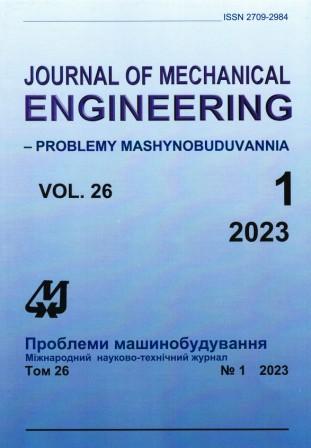Use of Logarithmic Decrement of Oscillation Damping for Prediction of the Aviation Structures Service Life
Abstract
Problem of predicting the residual service life of airplanes and helicopters is highly relevant for flight safety. In this paper, on the basis of the conducted research on the change of mechanical characteristics during materials fatigue accumulation, it is proposed to control the service life by changing the dissipative characteristics. In case of fatigue damage, the accumulative logarithmic decrement of oscillation damping δ increases to the limit maximum value δm, which corresponds to the critical length of the main fatigue crack, which leads to failure. The limit value δm can be set depending on the amount of energy spent on the development of the main fatigue crack, taking into account the dangerous part of the consumed energy. With the accumulation of fatigue damage, the growth of logarithmic decrement occurs at the expense of energy expenditure for the growth of fatigue cracks and internal friction. This is taken into account by the coefficient α, which allows to allocate a dangerous part of the energy that goes into the development of a main fatigue crack. The problem of durability prediction consists of two stages. At first, it is needed to determine δm for the critical crack length. Then, based on the two values of logarithmic decrement at the corresponding load cycles, the number of cycles to failure – to the critical length of the crack – is predicted by the Peris formula.
Downloads
Published
Issue
Section
License
Copyright (c) 2023 М. М. Гребенніков, О. Г. Дібір, А. О. Кирпікін, М. І. Пекельний

This work is licensed under a Creative Commons Attribution-NoDerivatives 4.0 International License.
All authors agree with the following conditions:
- The authors reserve the right to claim authorship of their work and transfer to the journal the right of first publication of the work under the license agreement (the agreement).
- Authors have a right to conclude independently additional agreement on non-exclusive spreading the work in the form in which it was published by the jpurnal (for example, to place the work in institution repository or to publish as a part of a monograph), providing a link to the first publication of the work in this journal.
- Journal policy allows authors to place the manuscript in the Internet (for example, in the institution repository or on a personal web sites) both before its submission to the editorial board and during its editorial processing, as this ensures the productive scientific discussion and impact positively on the efficiency and dynamics of citation of published work (see The Effect of Open Access).

